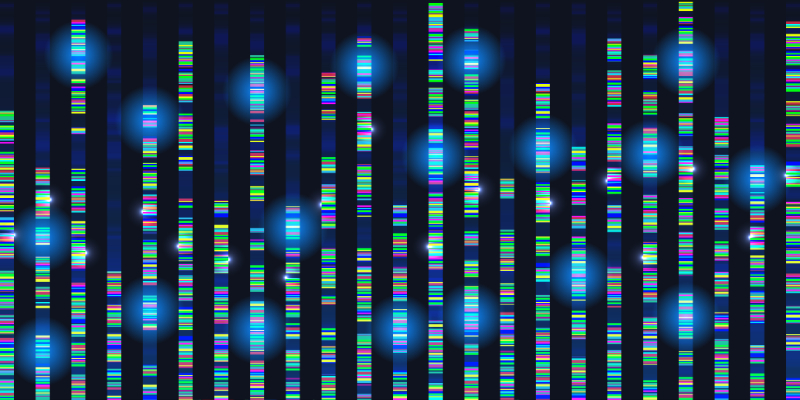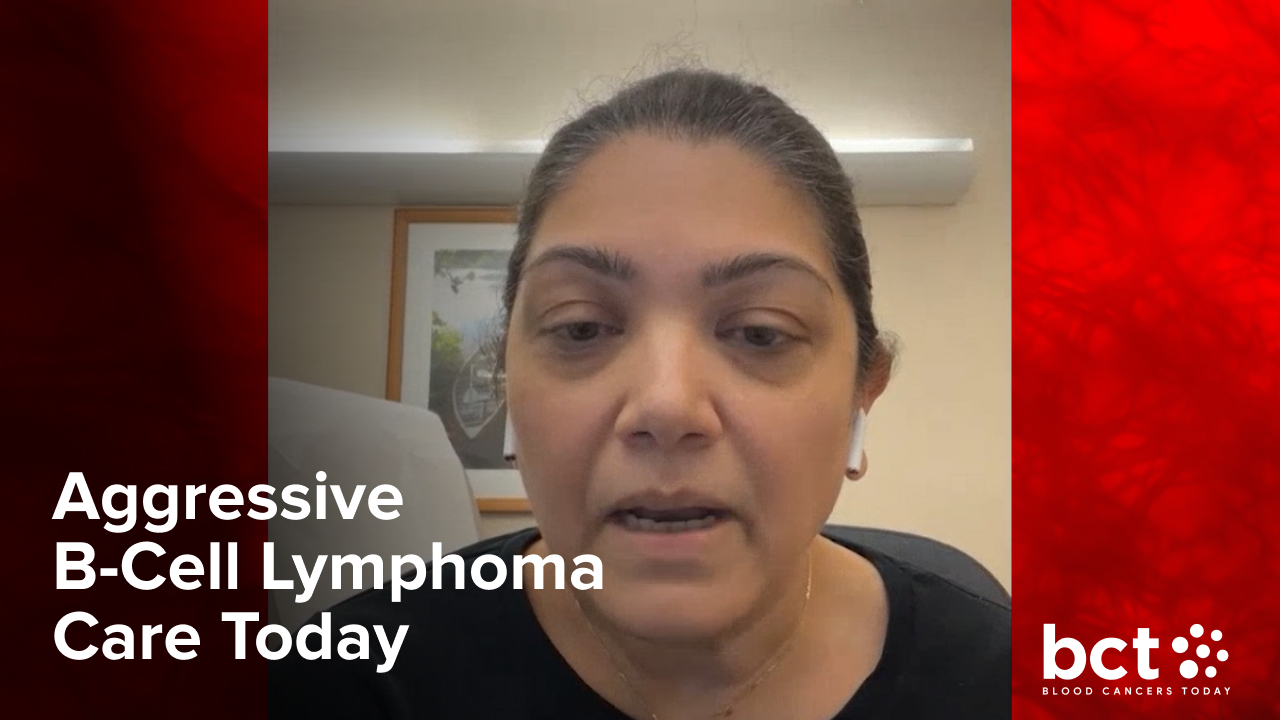
Take-aways:
- The double-hit signature characteristic of HGBCL-DH-BCL2 can be found in GCB-DLBCL and Burkitt lymphoma.
- Based on these findings, the double-hit signature is now referred to as the dark zone signature.
- The dark zone signature refines the cell-of-origin classification and identifies a subgroup of patients with DLBCL who have a poor prognosis following R-CHOP.
The double-hit signature that was originally described as characteristic of high-grade B-cell lymphoma with MYC and BCL2 rearrangements (HGBCL-DH-BCL2) can be found in cases of germinal center B-cell-like (GCB) diffuse large B-cell lymphoma (DLBCL) and Burkitt lymphoma, according to a recent study. The study’s authors have renamed the double-hit signature the dark zone signature based on these results.
Waleed Alduaij, MD, PhD, and Brett Collinge, a doctoral candidate, both of the University of British Columbia and the BC Cancer Centre for Lymphoid Cancer, and colleagues conducted the study and published its results in Blood.
Gene expression profiling dichotomizes most cases of DLBCL into two subgroups, GCB-DLBCL and activated B-cell-like (ABC)-DLBCL. Approximately 8% of DLBCL cases are reclassified as high-grade B-cell lymphoma with MYC and BCL2 and/or BCL6 rearrangements (HGBCL-DH) based on the detection of these rearrangements.
The researchers previously described a “unifying gene expression signature” in HGBCL-DH-BCL2, which they translated into a digital gene expression profile-based assay. They found the double-hit signature extended beyond HGBCL-DH-BCL2 to identify a subset of DLBCL tumors that lacked rearrangements of MYC and/or BCL2, with approximately 20% of those tumors harboring cryptic rearrangements.
Dr. Alduaij and colleagues designed the current study to assess “molecular determinants of real-world outcomes” in a population-based cohort of patients with DLBCL.
Study Cohort
The study included all patients in British Columbia who were diagnosed between 2005 and 2010 with de novo DLBCL, not otherwise specified or HGBCL-DH with DLBCL morphology. A central pathology review confirmed the diagnosis in all available diagnostic biopsies and selected a representative area for tissue microarray construction. They excluded bone and bone marrow biopsies and biopsies with a surface area of <2 mm 2 from the analysis.
The researchers profiled evaluable biopsies with fluorescence in situ hybridization (FISH), immunohistochemistry, and digital gene expression profiling to assign the cell of origin and evaluate the double-hit signature.
The study included 1,149 patients, 902 of whom had an evaluable clinical diagnostic biopsy. Of the 902 evaluable biopsies, 649 were included on tissue microarray. Gene expression profile data were available for 804 patients, including 629 of the 866 patients who received R-CHOP.
GCB and unclassified tumors that were positive for the double-hit signature were assigned to the double-hit-signature-positive group. Tumors that were negative or indeterminate for the double-hit signature were assigned to the respective cell-of-origin subgroups.
Double-Hit Signature Expression Extends to Burkitt Lymphoma, GCB-DLBCL
Double-hit signature expression occurred in 12% of all tumors of DLBCL morphology. Of the tumors that were positive for the double-hit signature, 97% had a GCB cell of origin and 3% had an unclassified cell of origin.
HGBCL-DH-BCL2 made up 38% of tumors with available FISH data that were positive for the double-hit signature. Of the tumors that were positive for the dark zone signature, the 62% that were negative for HGBCL-DH-BCL2 by FISH were “associated with outcomes similar to HGBCL-DH-BCL2,” the researchers wrote.
All 55 cases of Burkitt lymphoma profiled were positive for the double-hit signature, while 21% of the 431 GCB-DLBCL cases were positive for the double-hit signature. The investigators noted that Burkitt lymphoma and GCB tumors that were positive for the double-hit signature “showed near-universal expression” of the germinal center marker CD10.
“Altogether, [the double-hit signature] identifies a group of aggressive B-cell lymphomas of [germinal center] origin with a common gene expression phenotype that reflects the [germinal center dark zone], extending beyond HGBCL-DH-BCL2,” Dr. Alduaij and colleagues wrote. “These observations motivated us to rename the [double-hit signature] to the ‘dark zone signature,’ and it will henceforth be referred to as such.”
Molecular Signatures Impact Real-World Outcomes in DLBCL
Among patients who had gene expression profiling data, 54% had a GCB cell-of-origin subtype, 36% had an ABC cell-of-origin subtype, and 11% had an unclassified cell-of-origin subtype.
In patients who received R-CHOP, the freedom from progression (FFP) was 14% higher and the overall survival (OS) was 12% higher in patients with GCB-DLBCL than in those with ABC-DLBCL.
When the dark zone signature was incorporated as a group, it “subsumed” 90 GCB cases and three unclassified cases, constituting 18% of all GCB-DLBCL and unclassified DLBCL.
Those who were positive for the dark zone signature had the worst outcomes, with a two-year FFP of 51% and a two-year OS of 57%. When patients with dark zone signatures were removed from the GCB-DLBCL group, the remaining patients had excellent outcomes, with a two-year FFP of 87% and a two-year OS of 89%, the study’s authors wrote.
In advanced-stage disease, those who were positive for the dark zone signature had “significantly inferior outcomes” compared with those with GCB-DLBCL, “in whom excellent outcomes were maintained with a two-year OS of 90%,” according to the study’s authors.
Patients who were positive for the dark zone signature and those who had ABC-DLBCL had significantly shorter diagnosis-to-treatment intervals than those with GCB-DLBCL.
“Taken together, [the dark zone signature] identifies a poor-prognosis DLBCL subgroup following R-CHOP, whereas excellent outcomes were observed with GCB-DLBCL lacking [the dark zone signature] expression,” they wrote.
The authors acknowledged that their study had several limitations, including a lack of adequate material in some cases and small sample sizes in rare molecular subgroups.
“Recognition of a [dark zone] signature refined the [cell-of-origin] classification by distinguishing patients within GCB-DLBCL with clinically relevant differences in outcomes and diagnosis-to-treatment times,” they concluded. “These findings may potentially improve patient selection for treatment intensification and clinical trial design in DLBCL.”
Reference
Alduaij W, Collinge BJ, Ben-Neriah S, et al. Molecular determinants of clinical outcomes in a real-world diffuse large B-cell lymphoma population. Blood. 2022. doi:10.1182/blood.2022018248






 © 2025 Mashup Media, LLC, a Formedics Property. All Rights Reserved.
© 2025 Mashup Media, LLC, a Formedics Property. All Rights Reserved.